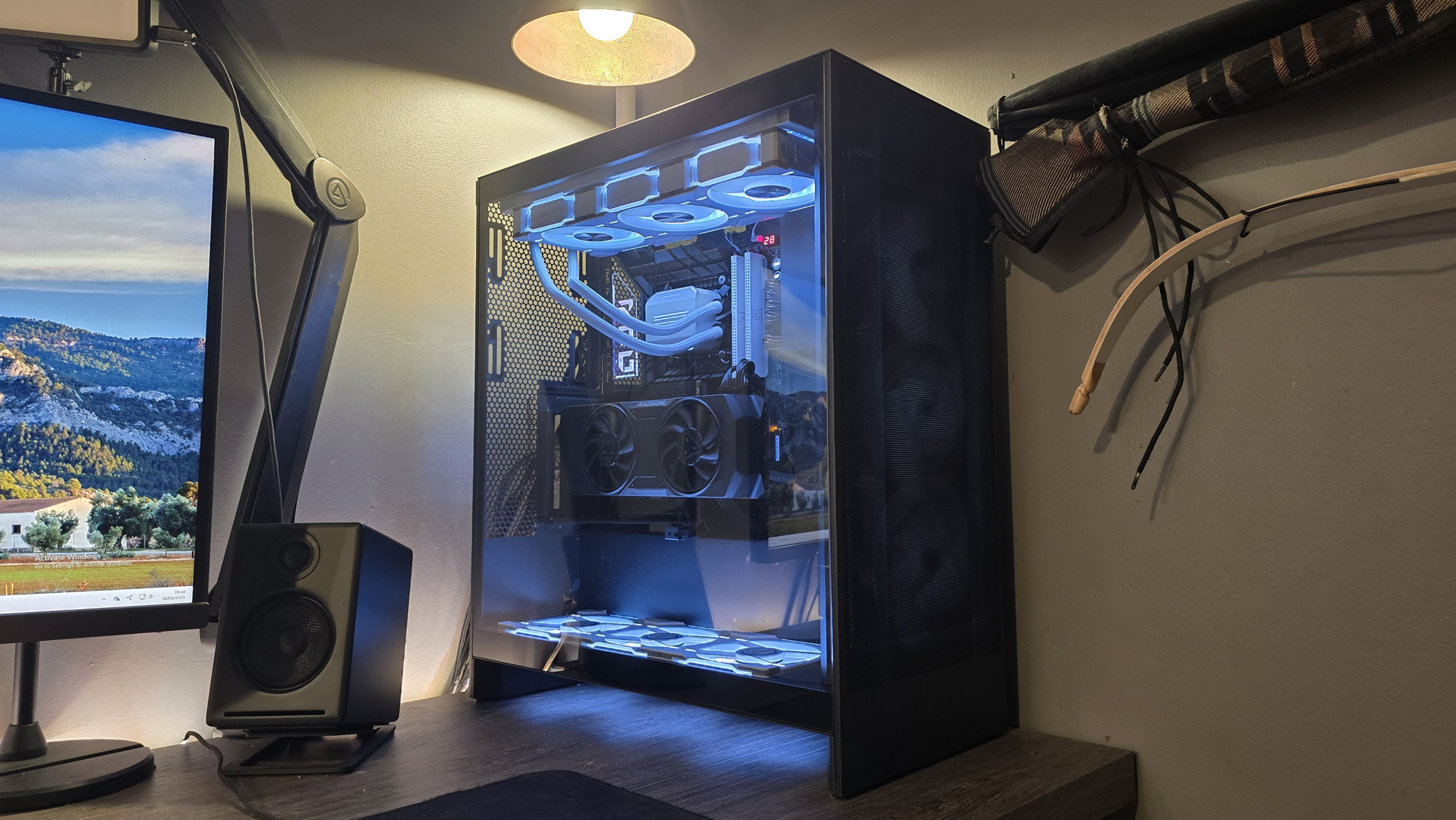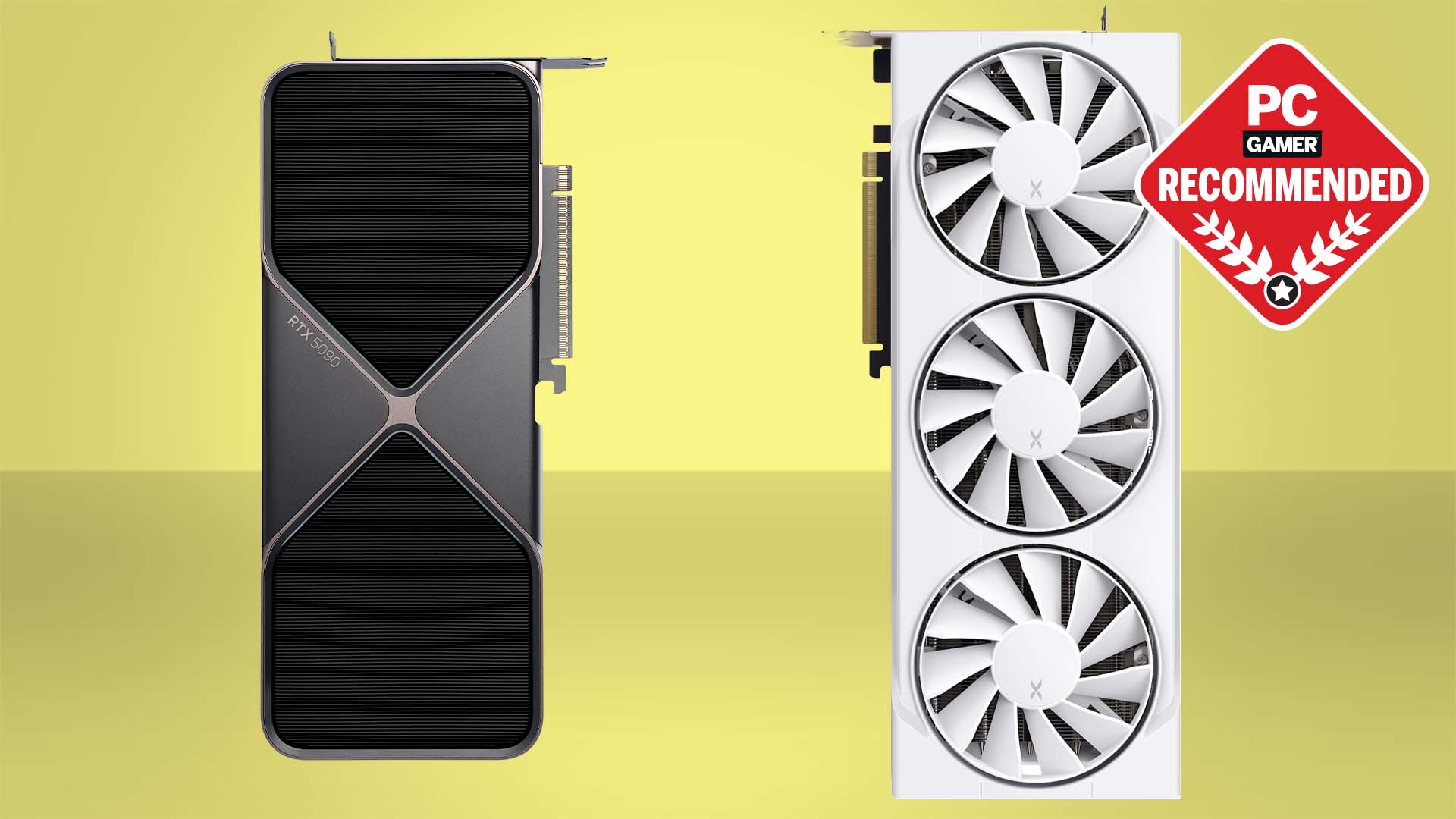Our Verdict
The H7 Flow got a serious update this time around, and with expanded cooling support and insanely competitive pricing, it's a fine pick. If you're looking to build a modern gaming PC, it doesn't get much easier than with this.
For
- Outstanding cooling potential
- Easy build throughout
- Strong pricing
Against
- Vertical GPU support needs work
- Could use a cheap fan controller
- No radiator brackets
PC Gamer's got your back
NZXT has really cemented its design philosophy in recent years. You can sum it up effectively as, well, pretty traditional. It's got that strict, rigid square aesthetic, the same tried-and-true internal layouts, those almost iconic perforated panels, the bold engraved logo, and of course an arsenal of internal cable management assistance inside to back it all up.
If you've ever built inside an NZXT ATX tower, certainly in the last decade, from the S340 Elite onwards, the general process, the style, the feature set—all of it has been remarkably consistent. You know exactly what you're getting from the outset, and that's no bad thing. Naming schemes may have changed, cooling issues may have been ironed out (those first cases were furnaces), but the overall feel is the same. These are chassis designed to make that build process as easy and as trouble-free as possible, and the company's latest iteration, the H7 Flow 2024 edition, follows that mantra almost to perfection.
Unlike most generations before it, the 2024 edition is actually quite the dramatic update. With each launch, it does feel like NZXT sometimes just looks at the market, takes a few notes, and tweaks the H7 series slightly to give it a fresh look and feel without being too dramatic about it. It doesn't particularly revolutionize anything that major. There are no wacky and wonderful geometries, intense RGB solutions, crazy colorways, or integrated screens, but instead just slight tweaks and changes, refining an all-round comfortable building experience.
Here's the thing though: the 2024 edition is perhaps the boldest step NZXT has taken with its own 'iterative' process. The internal chassis layout has had a radical shake-up. Thanks to an inverted power supply, NZXT's managed to include support for up to three 120 mm intake fans in the bottom of the case, directly feeding the graphics card with cool air. When you've got space heaters like the RTX 5090 and co. having that extra intake to draw cool air straight up into those spinning GPU blades can make a huge difference.
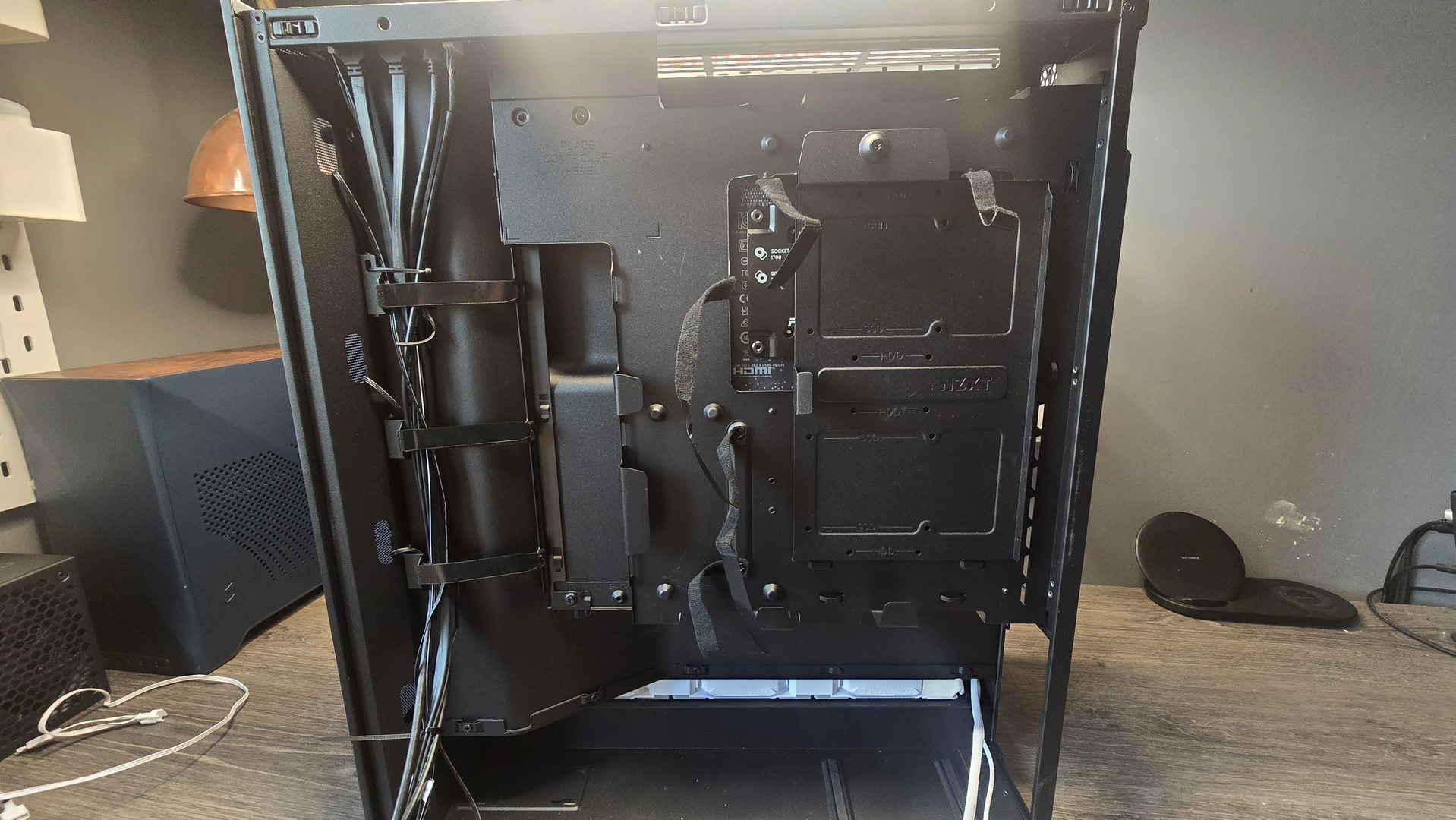
Form factor: ATX Mid Tower
Dimensions: 46.8 x 24.4 x 54.4 cm
Motherboard support: ITX, mATX, ATX, E-ATX (up to 277 mm)
Expansion slots: 7 horizontal
Front IO: 3.5mm jack, 2x USB 3.2 Type-A, 1x USB 3.2 Gen 2x2 Type-C
Total fan support: 10
Fan count: 3x 120 mm / 2x 140 mm TOP; 3x 120/140 mm FRONT (included); 1x 120/140 mm REAR; 3x 120 mm BOTTOM
Radiator support: Up to 360 mm TOP; Up to 420 mm FRONT; Up to 140 mm REAR
Graphics card support: 410 mm length
Storage: 2+2x 2.5-inch; 2x 3.5-inch
PSU support: ATX (up to 200mm)
Weight: 11.13 kg
Price: $130, £119, €140
There have also been some significant tweaks to its overall appearance too. That perforated front panel now covers the entire case, giving (up to) three 140mm front fans plenty of breathing room, and the overall style just feels slightly more modern compared to its 2023 and 2022 counterparts. Perhaps unsurprisingly.
Pricing is incredibly tight too. As standard, you have the H7 Flow (reviewed here), plus the RGB variant, which includes one of NZXT's new F360 RGB Core "frame" style fans. Although there is an "Elite" version, that's still running on the 2023 skeleton, so you won't get the inverted PSU or better GPU cooling support as a result of that. Pricing for the non-RGB starts at around $130 US, but for the last few months has consistently sat at the $100 mark. For the RGB variant, you're looking at an additional $20 on top of those figures above. That makes it remarkably affordable for what you're getting, more so when it's on offer.
The NZXT H7 Flow isn't a chassis that particularly stands out from the crowd. It's not exactly exotic in any manner. It looks great; sure, that aesthetic is decent enough. The clean lines, the design, how it all fits together—it works well. And when you've got a build in it, finished up, cable-tidied and done, it's incredibly slick. But there are no touch displays, or wild amounts of curved glass, or inverted motherboard layouts, or insanity-driving RGB. It's rather ordinary in that way. But honestly, that's a blessing, not a curse.
It's not trying over hard to be too 'gamer'. There's no madness about it, and that gives it a class and sophistication which makes it look enticingly professional. It's arguably why NZXT has been so successful over the years. Some of the cleanest setups out there feature NZXT chassis, and you can understand the reasons for that. The design language has been really nailed down, and it gives the brand a tight feel from product to product.
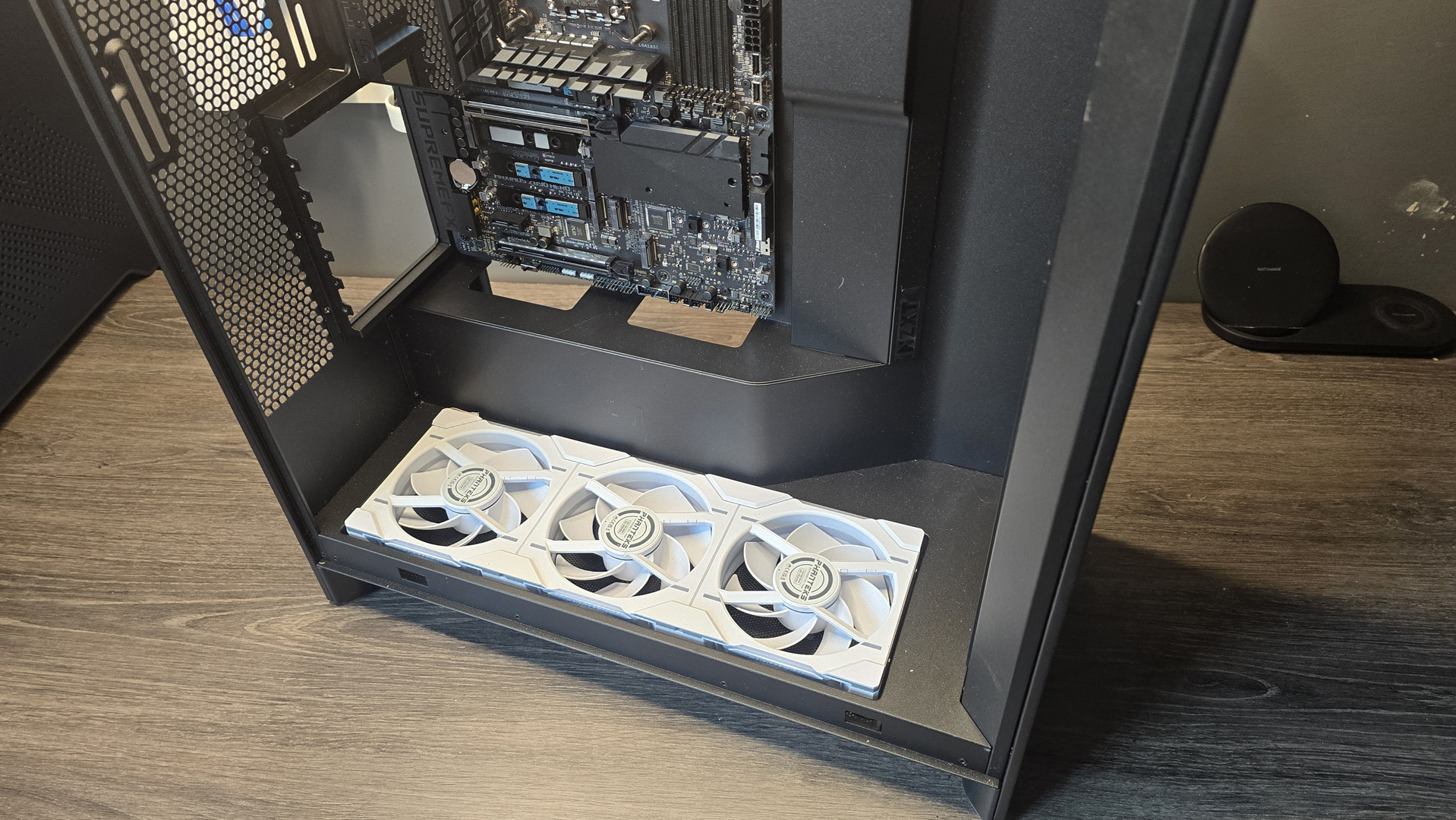
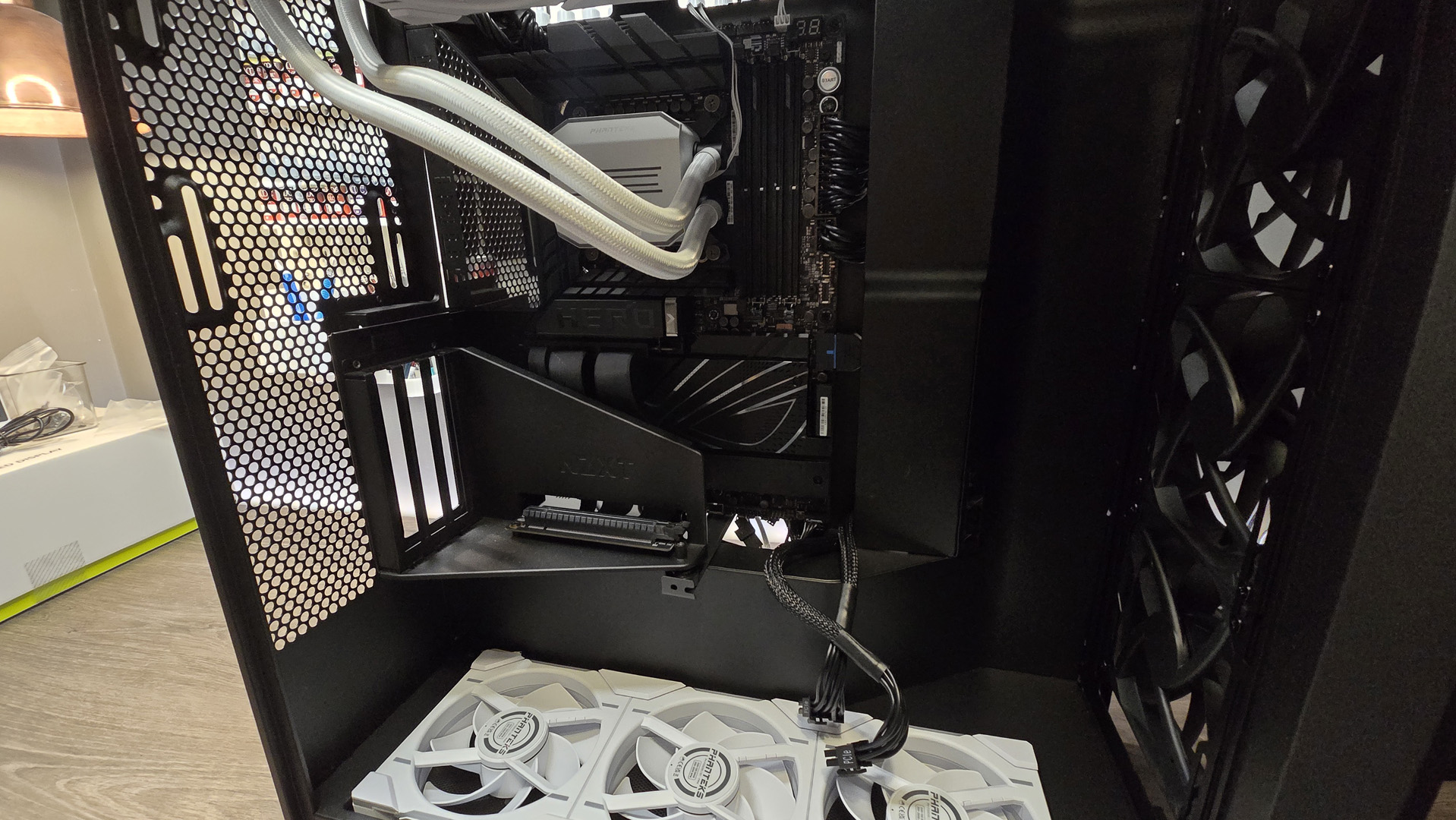

Yet, it's the cooling prowess that really cements the H7 Flow in a tier above its predecessors. Support for 10 fans is just wild, certainly in a standard mid-tower design like this. Given its footprint, the fact you can mount that many inside and still install up to a 420 mm radiator in the front and a 360 mm option in the roof is just awesome. It gives you broad compatibility with some of the biggest and best CPU coolers out there. In a world where both CPU and GPU temperatures are as high as they are, that's massively advantageous.
Having three 120 mm fans in the floor as well, at this point, should just be the de facto norm in case design. Even if GPUs don't get hotter in the next few years, just having that additional intake, working with convection to drive cool air up into the case and onto that card, is massively beneficial towards managing internal temperatures and really helps give the 2024 variant an edge over its past selves. It's not the first case to do that by any means, and there are a ton of alternatives out there, including Phantek's Evolv X2, but still, top-tier, and a feature I'm glad to see make its way to this line-up.
The only cooling downside I can spot is that neither the stock variant I have here on test, nor the RGB upgrade, comes with a fan controller as standard. Not even a cheap one, and that feels like a misstep on NZXT's part. You could easily bundle in a budget unit to help us PC builders really take control of the cooling. I'm not asking for integrated fan controls in the I/O or anything, but similar to Corsair's 4000D Airflow, having something like that would elevate the cooling capacity a genuine step above the rest.
There's support in the chassis for it, too. At the top left of the motherboard tray at the rear of the case, you'll spot "PLACE CONTROLLER HERE" text etched into the panel. NZXT does sell controllers as well (although admittedly only for its own RGB fans), so it certainly has the capacity to do it.

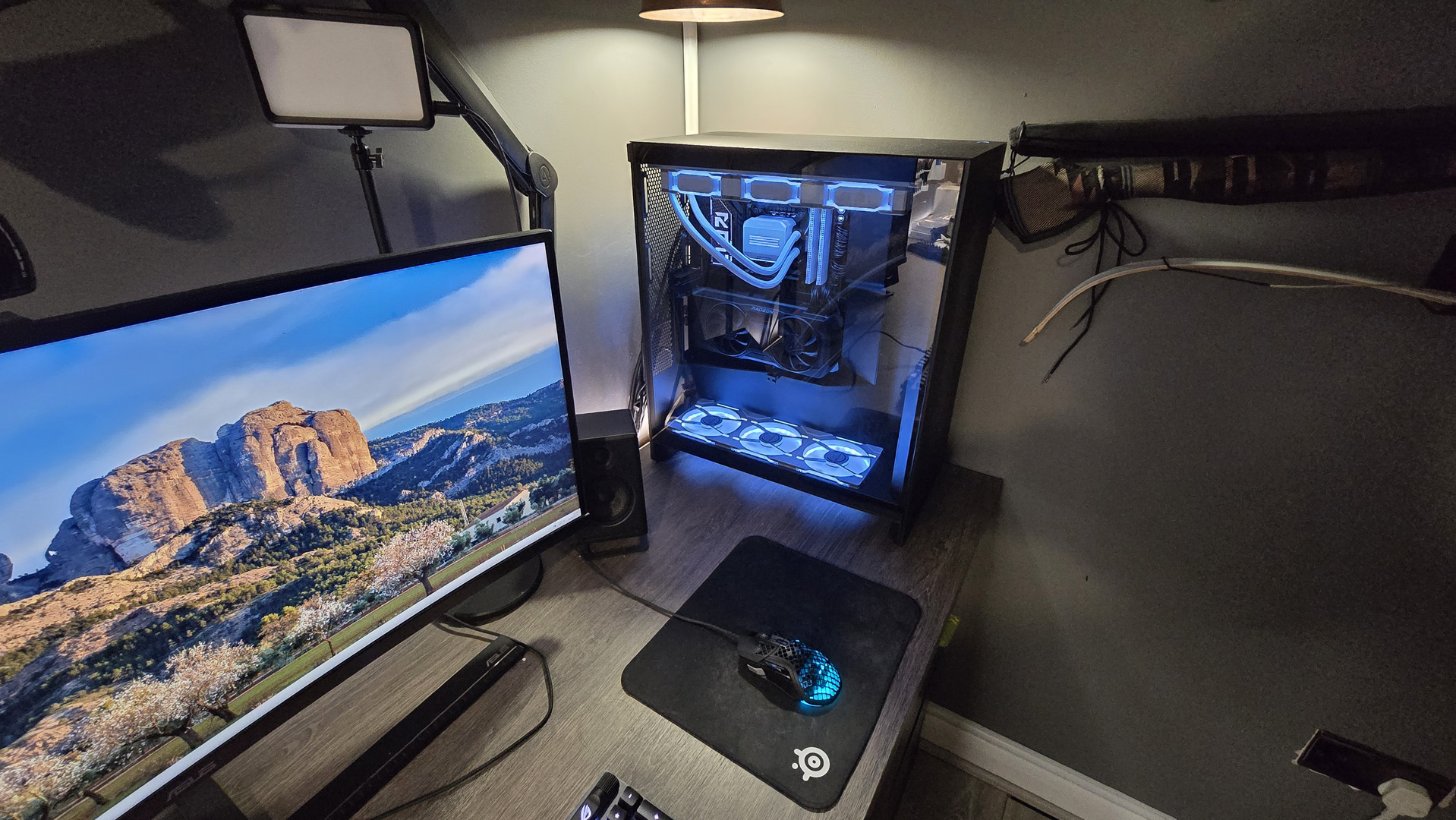
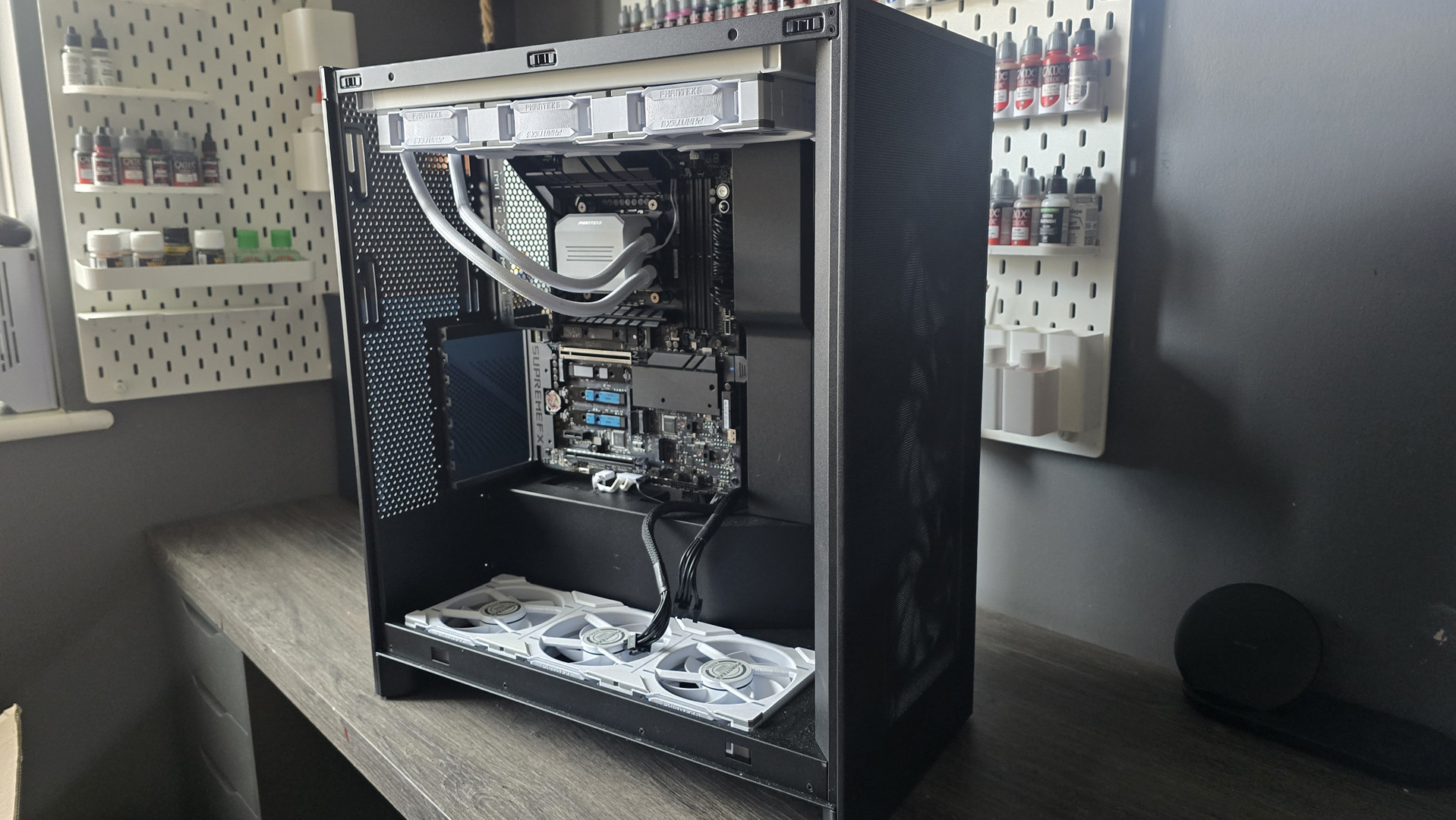
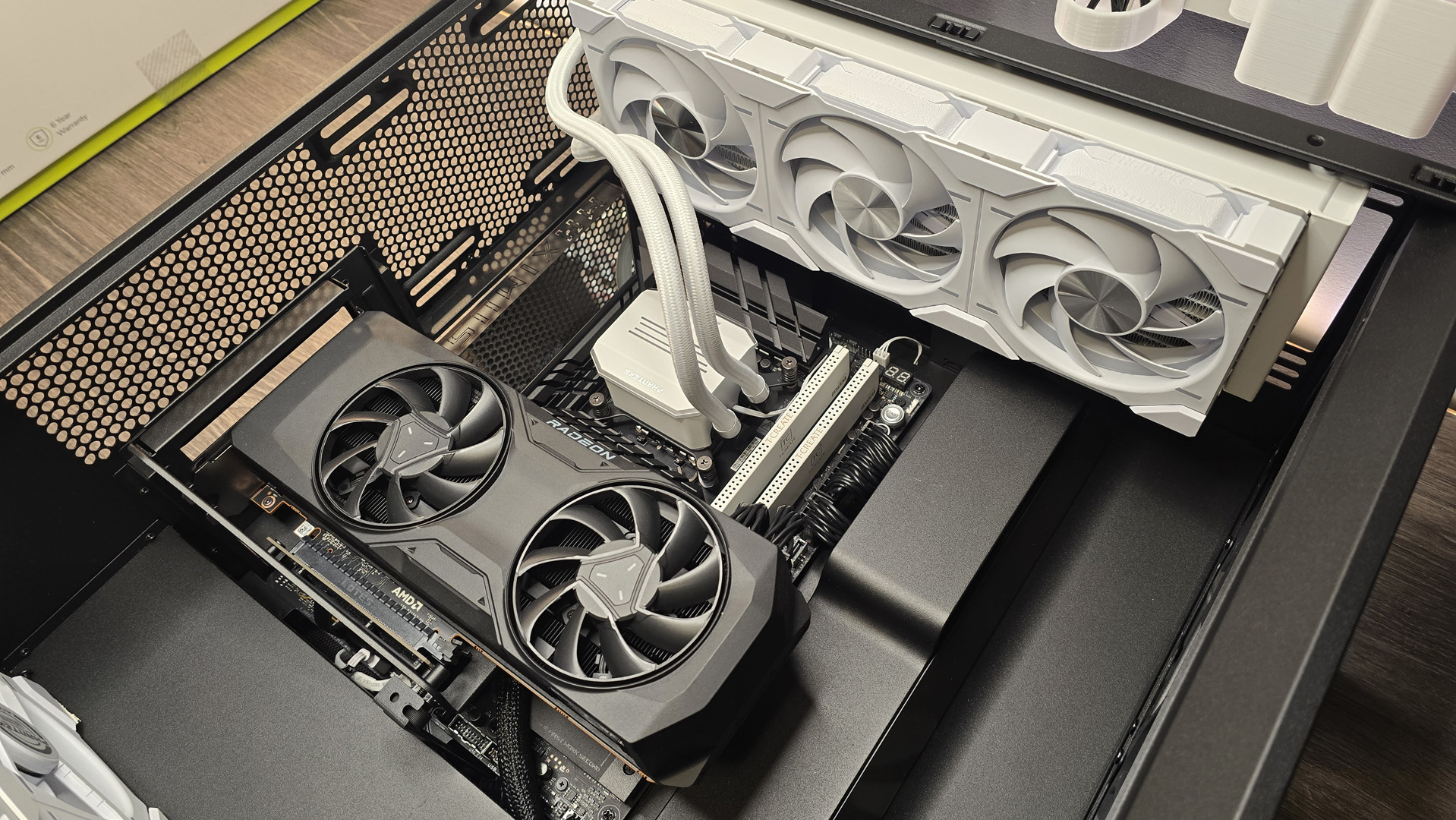
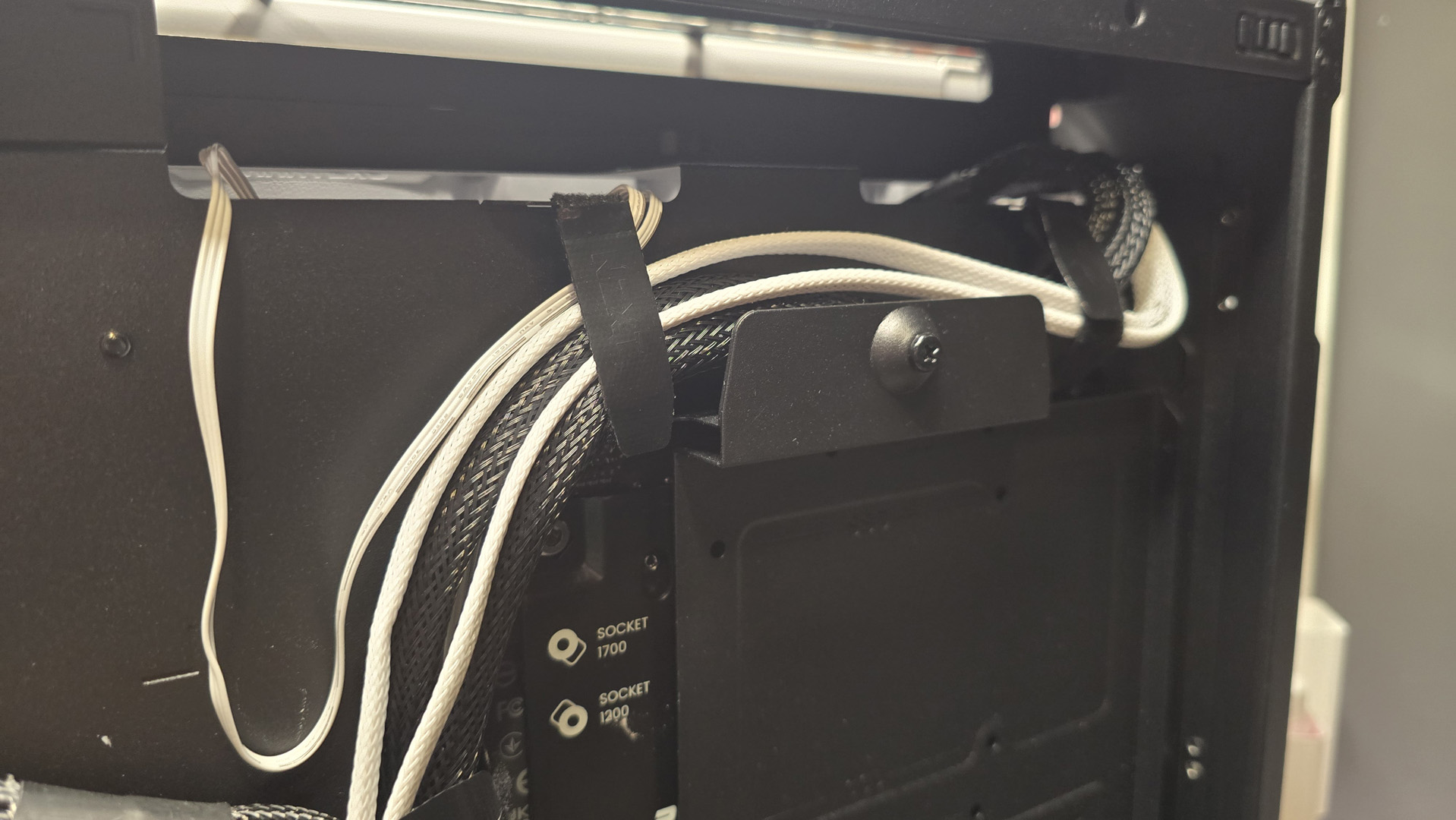

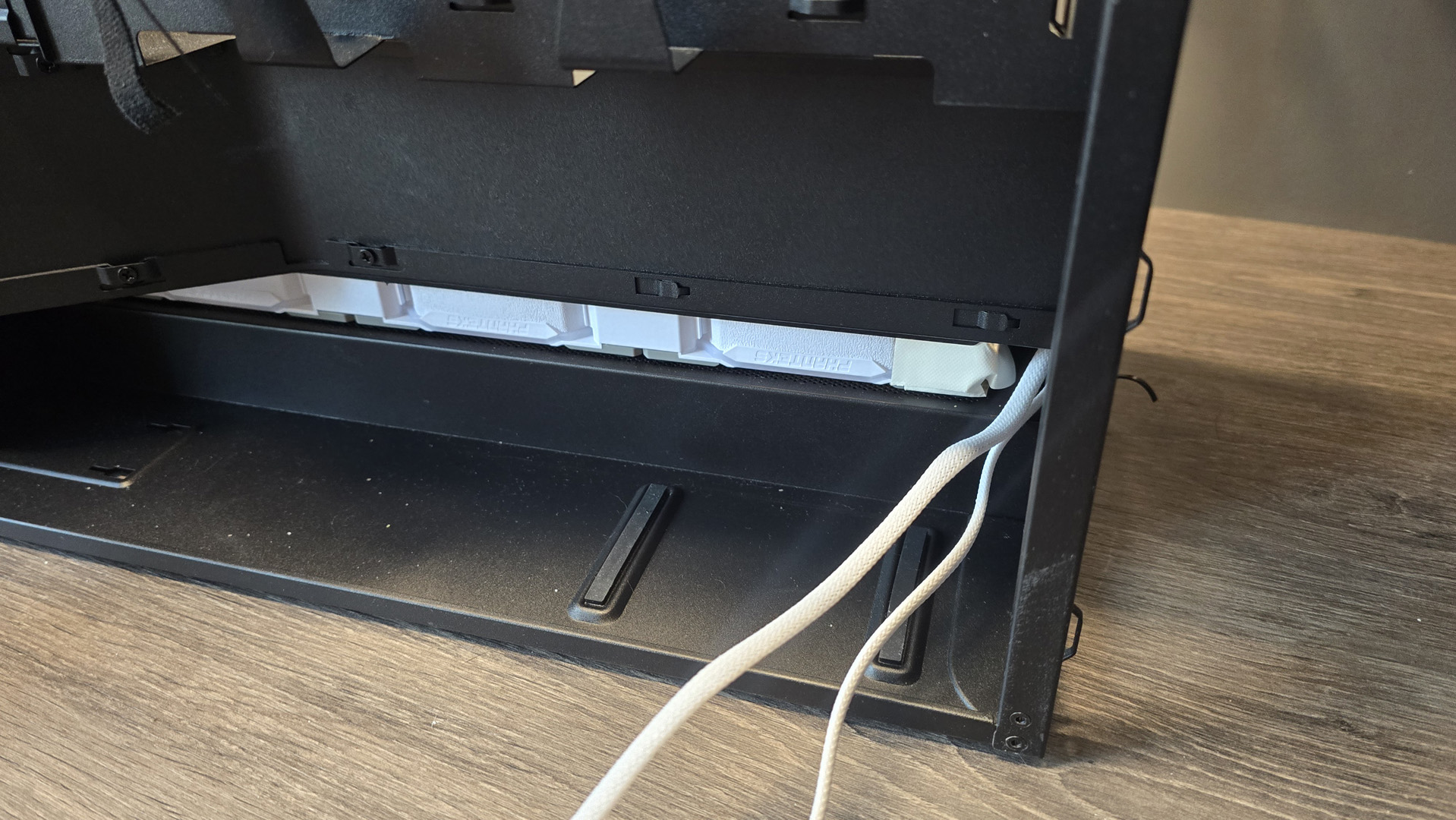
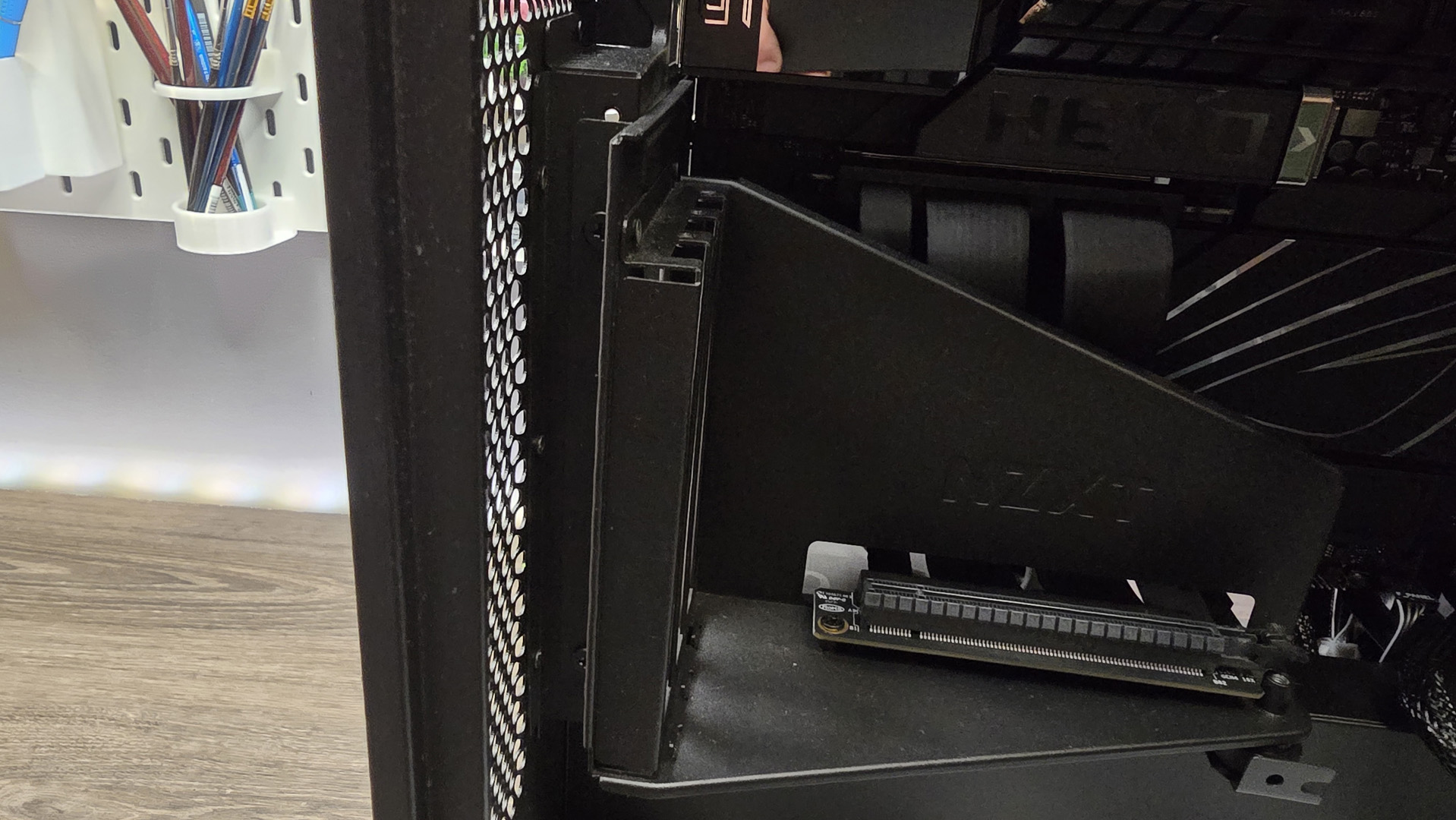
CPU: Intel Core Ultra 9 285K
RAM: 64 GB (2x32 GB) TeamGroup T-Create Expert DDR5 @ 6000 C34
SSD: 2 TB Seagate FireCuda 540 M.2 PCIe 5.0
GPU: AMD Radeon RX 7800 XT
Motherboard: Asus ROG Maximus Z890 Hero
CPU Cooler: Noctua NH-U9S chromax.black
PSU: 1200 W NZXT C1200 80+ Gold
I've built in this chassis a number of times now, both in its RGB and non-RGB variants, and the experience has been consistently the same. It's remarkably easy to build into. Strip the panels off, store them in the box, and what you're left with is a hugely open chassis to work in, with some seriously impressive cable management in the rear.
There are a few things you need to bear in mind if you do decide to go with this 2024 edition. Those floor-mounted 120 mm fans do require a little bit of cable management to get right; try to feed the cables through to the back of the case first and make sure they're oriented correctly and those cables are out of the way of the power supply. Then flip the case on its side and secure them from the bottom. Do that before you install your motherboard or any other components first.
As for your power supply, don't make the mistake I did, and try and install one of Corsair's RMx Shift PSUs in it. The only orientation it'll fit puts the connectors directly in conflict with the metal PSU cover above. It's just not compatible, unfortunately.
Additionally, there are no removable radiator brackets or anything along those lines here, sadly. Not in the front or the roof, so if you can grab a spare pair of hands from someone to assist holding the radiator in place while you secure it, you'll have a much better time.
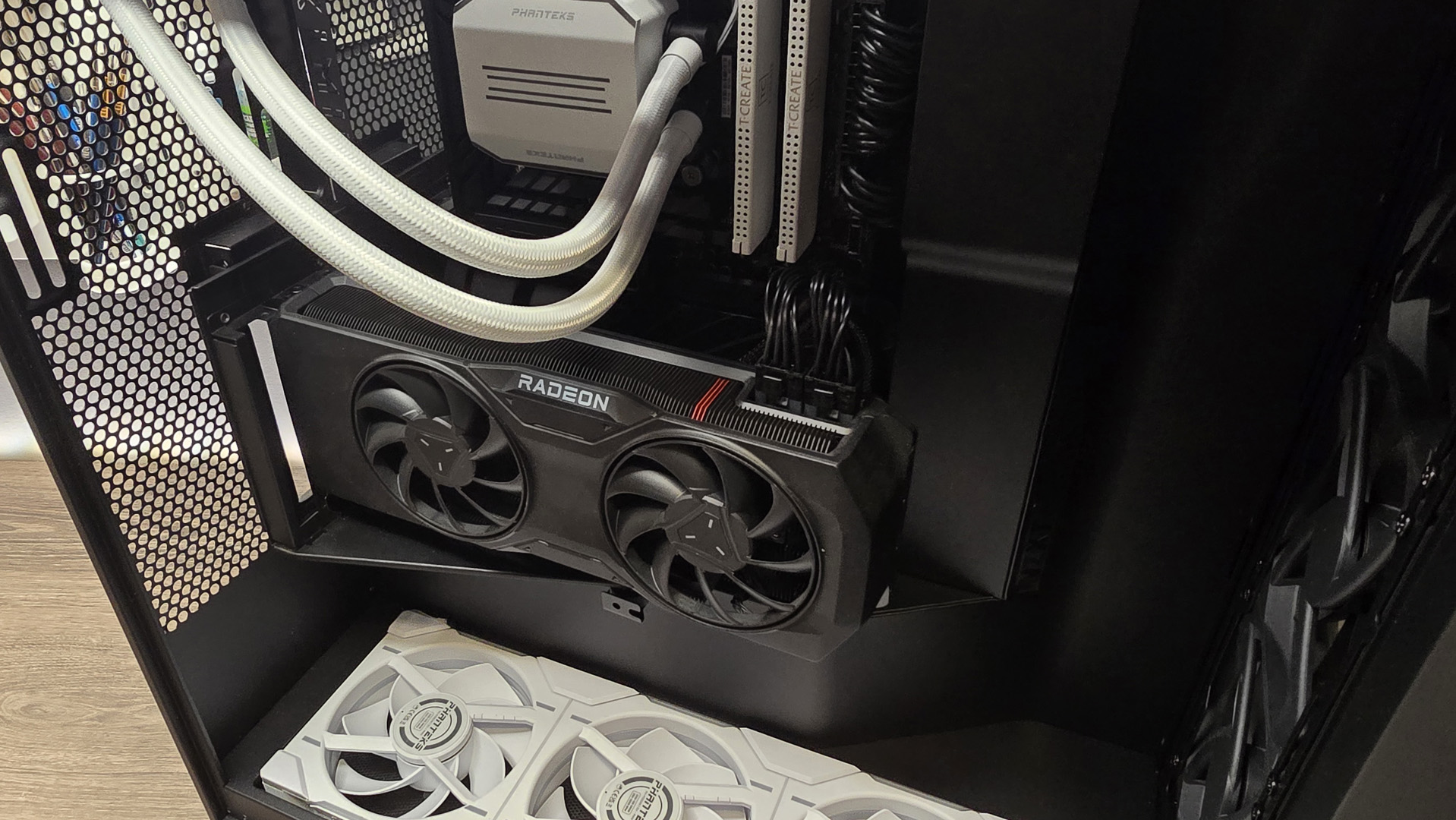
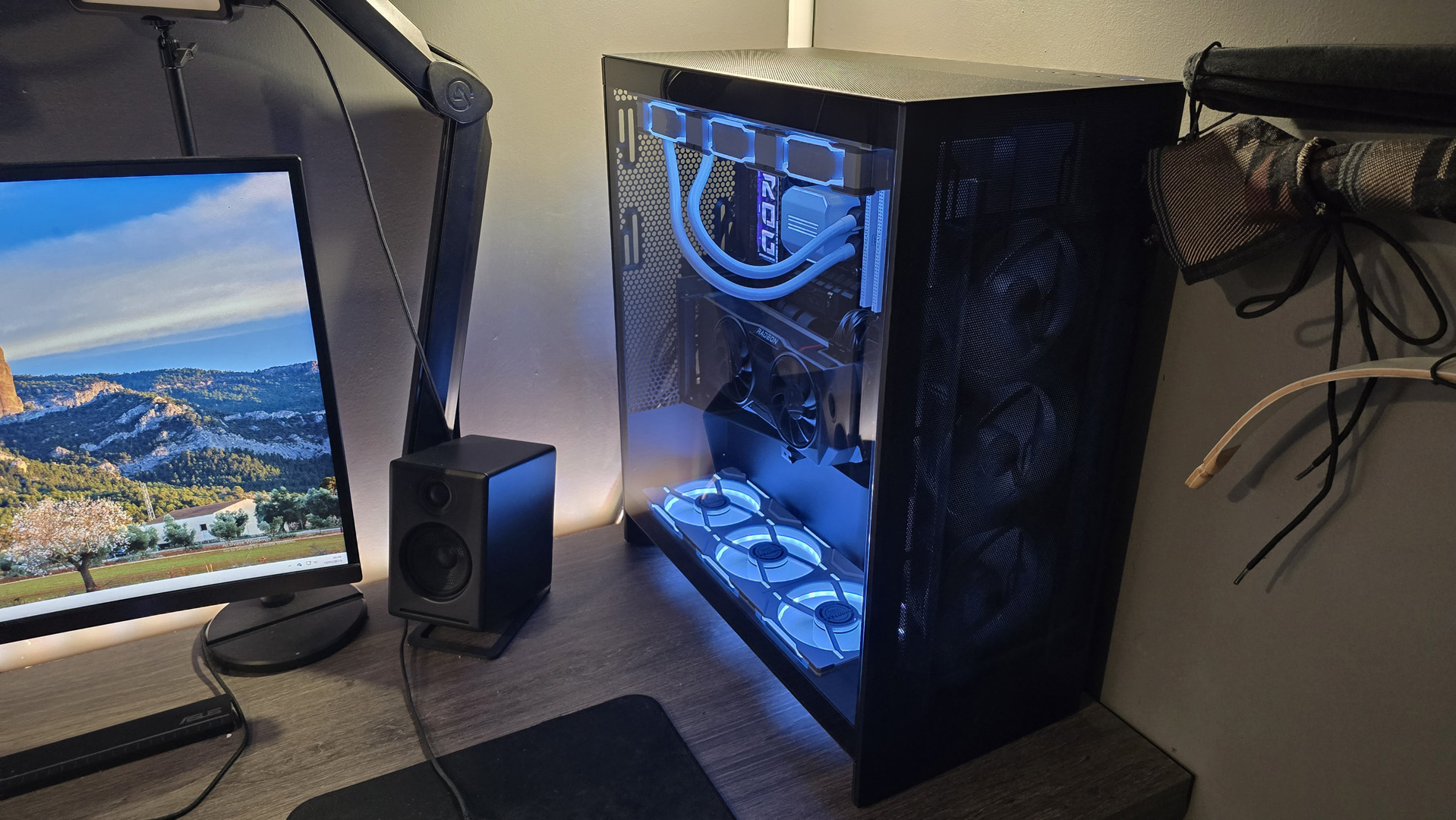
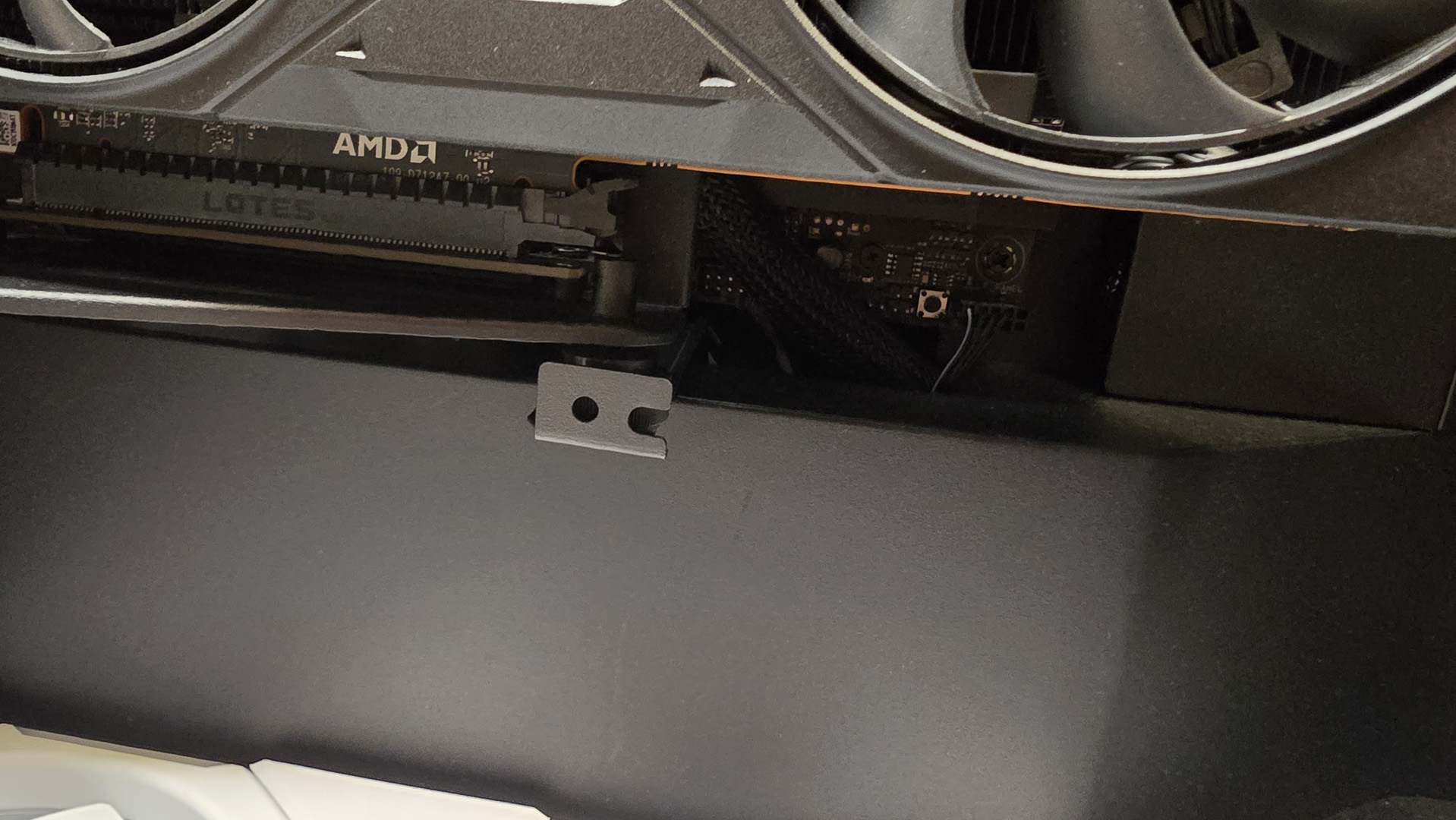
✅ You're after expansive cooling support: With support for ten fans and up to a 420mm radiator, the H7 Flow has got some serious legs in the cooling department.
❌ You want something flashy: NZXT's design language is clean and simple—maybe too simple. If you're looking for something with a little more extravagance, you might want to look elsewhere.
Theoretically, the NZXT H7 Flow does support vertical GPU configurations, as long as you have NZXT's latest 2024 bracket. The only downside to that is that there's nowhere for the foot to effectively support itself on the case, as there's no PSU cover underneath it. What that tends to lead to, particularly for heavier cards, is a bit of GPU sag, (yes, even with a vertical GPU mount). You can theoretically bodge it by using a small piece of plastic to wedge under the foot (or in my case a rear PCIe bracket; really don't do that though) and the cable cutout in the chassis, and it will lift it up, but your mileage may vary.
In a lot of ways, the H7 Flow 2024 reminds me a lot of Hyte's Y40. Just slightly bigger, and with better cooling support. There's a clean, simple elegance to it that kinda makes it greater than the sum of its parts. Combined with outstanding pricing, it's certainly in contention to be one of the best PC cases out there today. It's not perfect, of course; corners have been cut to hit that price point for such a bulky large mid-tower design, but for those on the hunt for a clean chassis that delivers some exemplary cooling, this might just be the perfect fit.
The H7 Flow got a serious update this time around, and with expanded cooling support and insanely competitive pricing, it's a fine pick. If you're looking to build a modern gaming PC, it doesn't get much easier than with this.
After graduating from the University of Derby in 2014, Zak joined the PC Format and Maximum PC team as its resident staff writer. Specializing in PC building, and all forms of hardware and componentry, he soon worked his way up to editor-in-chief, leading the publication through the covid dark times. Since then, he’s dabbled in PR, working for Corsair for a while as its UK PR specialist, before returning to the fold as a tech journalist once again.
He now operates as a freelance tech editor, writing for all manner of publications, including PC Gamer, Maximum PC, Techradar, Gamesradar, PCGamesN, and Trusted Reviews as well. If there’s something happening in the tech industry it’s highly likely Zak has a strong opinion on it.
You must confirm your public display name before commenting
Please logout and then login again, you will then be prompted to enter your display name.
